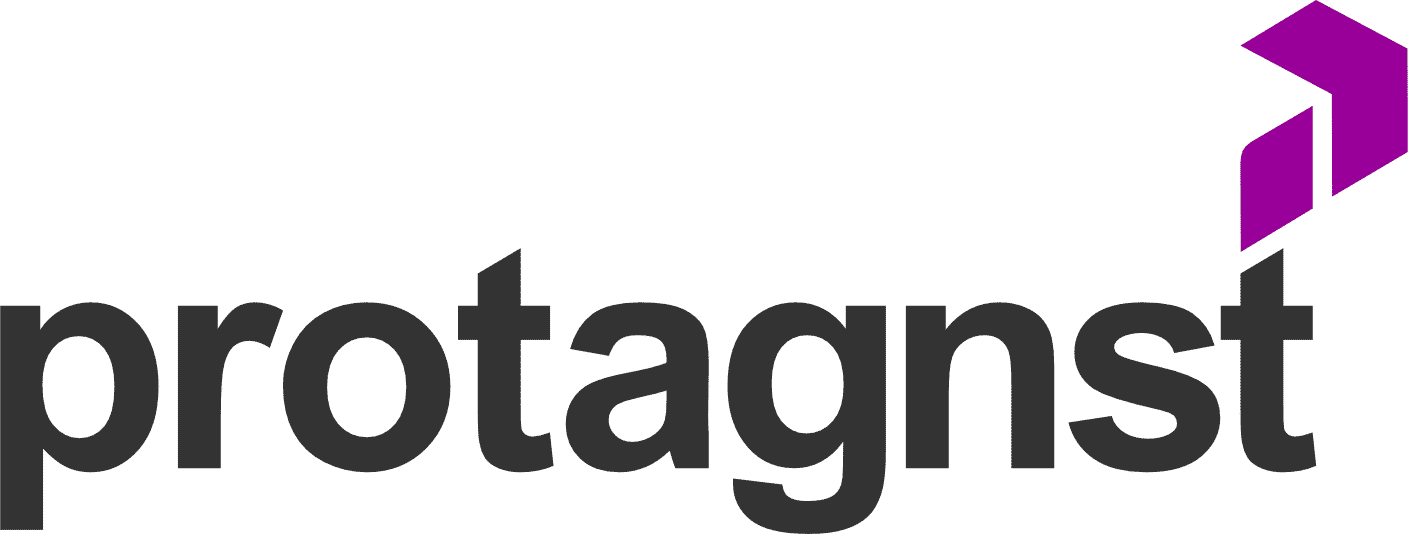Prospecting customers is a task that is part of the daily life of those who work with sales. There are several strategies to get new leads and one of the best known is the cold call, that technique in which the seller or responsible for pre-sales reaches out to someone who may not even know your business to offer the product. This technique brings good results, but it also carries with it some disadvantages. And, more and more, it is losing ground to cold calling 2.0. Have you heard?
Cold calling 2.0 is one of the most modern methods of do active B2B prospecting (which focuses on business-to-business sales). The basis is the same as calling as we’ve always known it, but adapted to this increasingly connected world and people increasingly valuing their time.
Also called calling 2.0, this model is based on the use of e-mails, app messages and, of course, also by telephone – but in a more specific way.
Much more than using new means, however, cold calling 2.0 has a different proposal. Instead of looking for a lot of sales, he focuses on better sales, with a higher average ticket and greater added value.
This is because, from the beginning,prospecting is carried out supported by surveys. Even if you keep getting in touch with prospects who may not even know your company, it’s already known that they have a need to fill – and that your company has the means to do that.
Another point to highlight is that cold calling 2.0 has developed targeting B2B business, and not the final consumer. Traditionally, business between companies takes longer to complete and involves more interaction. And that is precisely what calling 2.0 proposes.
Mapa do Conteúdo:
ToggleRemembering traditional calling
You probably ever heard of cold calling and if you work in the sales area, it is possible that you have already made use of this strategy.
This model is quite old and is still used today, being a classic method of active prospecting.
A cold call is the model in which someone makes contact by telephone with a lead in order to present their product or service.
Often, the person receiving the call is not even aware of the existence of such a product or company – or even that he was a potential customer for it. And that’s precisely where the name of the strategy comes from: it’s a cold call, in which the potential customer is approached without him having expressed interest.
This system is widely used because it brings immediate results, unlike inbound marketing models where conversions tend to happen in the medium term, albeit spontaneously.
But like all sales strategies, cold calling has strengths and weaknesses. Among the disadvantages, one of the main ones is the possibility that the person receiving the call will consider the approach inconvenient – and this has a strong potential to make the company offering the business opportunity equally inconvenient.
Also, the focus in this model tends to be on a quick sale. The seller’s conversation has a more persuasive tone, with the aim of ensuring a negotiation as soon as possible. The main intention is in the moment sale, and not necessarily in a relationship between companies or between company and consumer in the long term. Thus, although it brings immediate results, it does not always ensure their perpetuity.

And what is cold calling 2.0?
Cold calling 2.0, or even cold calling 2.0, is a method of actively prospecting for new customers, with whom no previous negotiations have been held, but without using the traditional cold call. It is, after all, an evolution of this model.
As we have seen, in the past this type of prospecting was done through phone calls to contacts gathered in large lists by the marketing team. Even if it gives results, the method is not exactly efficient: the lists invariably also have uninterested contacts, which often represent precious wasted minutes.
With cold calling 2.0, you start using new prospecting tools, which include contact via email and WhatsApp. And surveys have already shown that more than 70% of those born between the years 1980 and 2000 – the so-called Millennials – prefer that negotiations be handled by email, not by phone. These are people in this age group who currently occupy strategic positions in companies.
However, there are still other reasons that make calling 2.0 a more interesting model. It allows the negotiation to be more pleasant and to develop gradually. Instead of a phone call that can represent a direct denial, exchanges of emails and WhatsApp messages allow the approach to also be consultative.
In other words, this type of prospecting is more analytical. This makes the team responsible for capturing new leads identify whether it is ready to move forward in a negotiation or if it still needs to be worked on better.
In this sense, cold calling 2.0 also becomes very useful for retaining customers, since it allows the sales team or even pre-sales make a more complete prior diagnosis of that potential client and everything that can be offered to attract him.
The importance of prospecting new customers
The sales sector is historically one of the most important of companies. This does not mean that it is more relevant than development or production – which, after all, produce what you want to sell –, but without a team prepared to put that product on the market, little progress is made.
In addition, it is sales that bring revenue to companies and, therefore, sustain them.
Therefore, having a solid customer base is essential to maintain the financial health of any undertaking. But always relying on the same sales volume impedes growth and is, at the same time, risky. Many times, an important client stops doing business with you for a number of reasons, billing drops and this can bring harmful results.
Thus, being on the lookout for new leads should be a constant goal.
However, on many occasions, this alone is not enough. If managers cannot predict how much they can grow in revenue, it becomes difficult to plan the next steps for their companies. And if they waited to confirm billing, they might eventually miss out on precious opportunities.
Because it was precisely by solving this equation that an American became a true global guru in sales.
Aaron Ross’ Predictable Recipe
With an engineering background, the American Aaron Ross changed his life – and the way to succeed in sales – from 2002, when he was hired by Salesforce, one of the largest CRM companies in the world.
He assembled a sales team and implemented anew outbound prospecting model. The result is that Salesforce has increased its revenue by 20 times. More recently, Aaron Ross released the book “Predictable Income”, in which he teaches his method, which has helped managers around the world to improve their companies’ financial results.
Ross’ method has everything to do with the title of his work. The idea is to predict as closely as possible how much the company will earn from its sales, enabling managers to estimate growth and invest more safely in the future of the business.
To achieve this, Aaron Ross teaches the pillars that support sales. Are they:
- Define a prospect in the company – which will be just that, and not the person with whom the sale will be negotiated directly;
- Pre-contact via cold calling or, better yet, cold calling 2.0;
- Use inbound and outbound marketing strategies, so that if you have lead variation;
- Focus only on high-quality leads, not all;
- Focus on key metrics;
- Conquer the prospect without haste.
- And, as we will show below, these pillars have everything to do with cold calling 2.0.

Difference to traditional calling
Although the central idea is the same, that is, to actively prospect new leads, getting in touch with people or those responsible for companies who may have never even heard of your business, the approach and development of it are quite different.
One of these differences is in the team that works on prospecting. While in calling everyone who works in sales acts in this role, in call 2.0 there is a team that specializes in this.
This leads to another posture change. The intention to sell the most comes out, the intention to sell better comes in. The idea is not always to close the sale, but to reach a point where it is good for both the seller and the buyer.
It can even be said that, in cold calling 2.0, the first contacts are not prospecting, but “pre-prospecting”. The idea is that salespeople or pre-salespeople identify real potential customers, what we define as person.
As you can see, in cold calling 2.0 the focus is on creating a good relationship. This helps develop leads and qualify them. Instead of incisive phone calls or even long emails, empathy is worked on here: smaller and more frequent contacts and understanding of the problem to be solved.
Main features of cold calling 2.0
Cold calling 2.0 has aspects that distance it from the model as it has always been known. It goes through having a cadence in contacts, the search for adding value to the client, prior knowledge of those with whom one deals, the interest in having an analytical profile and the assembly of a specialized team. Follow along.
Cadence
Unlike the traditional method, in which the intention is to be able to prospect new customers immediately, in calling 2.0 a very striking aspect is the cadence in the negotiation. Making a sale on the first contact is rare, and that’s not even the intention.
Put another way: making message exchanges and conversations flow naturally is what will lead to a sale also happening naturally, as well as opening doors for the new customer to become a regular customer.
In this sense, immediacy can sometimes even get in the way. Without a good understanding of what that potential customer really needs, there is a risk of offering something that does not fit the needs. Like this,the sales objections they would be more likely to appear, and a promising business could fall apart.
In summary, in cold calling 2.0 everything needs to be done in due time. The saying that haste is the enemy of perfection fits this sales model very well.
Added value, thinking about customer success
In addition to a beautiful speech, cold calling 2.0 focuses a lot on customer success. And that’s because, as we said, the goal is also to seek a long-term relationship.
This is a very peculiar characteristic of this method and this is due to the fact that it is dedicated especially to B2B negotiations, while the traditional cold call was aimed at sales to the final consumer (B2C).
Businesses that are not good for companies tend not to be repeated in the future. After all, few people who lost out on a major acquisition in the past would be willing to take the risk again. Therefore, focusing only on selling, and not on selling something that adds value to those who buy it, will transform it into just an occasional business.
Negotiations via calling 2.0 tend to take longer and start slowly. This, however, is to be expected. The intent is not to drive sales on the first or second contact – more often than not, it takes way longer than that. And you will understand why in the next topics.

Customer knowledge
If the intention is to add value and focus on the customer, knowing them is a fundamental factor.
In traditional cold calling, this is virtually impossible. After all, contact lists come ready-made and the idea is to take an approach aimed at selling quickly. Those who make the call most of the time have no information about the recipient, other than the basics, which were gathered by marketing.
In cold calling 2.0, in turn, researching the customer, knowing their pain points in advance and going deeper into them from the first contacts makes all the difference. More than that, it’s part of the process.
In this system, the contact person needs to go deep to understand if the potential client is in fact ready to be forwarded to the team that will deal with sales – or, if that is the case, to advance himself at this point.
Therefore, it is not enough just to rely on superficial information. It takes study and ability to understand. Information is the basis for a good sale.
Analytical profile
In the cold call, the seller deals exclusively with this: offering a product and talking as much as possible about it, its advantages and why that deal deserves to be closed soon.
Many times – practically all – the speech is always the same. The seller memorizes the text and repeats it to exhaustion, no matter who the lead is. And, if the seller is not properly trained, it is easy for those who serve to notice this.
Cold calling 2.0, on the other hand, is not concerned with pushing the product or service right away. On the contrary: the goal is to start arousing interest so that, in future contacts, we can move forward in the negotiation.
For this, the professional who works with calling 2.0 is trained more to listen – or read, in the case of e-mails and text messages – than to speak. He shows his product, but listens to the interlocutor what he needs and under what circumstances.
The intention is to gain trust and have the maximum amount of subsidies to design a more personalized proposal, which fits perfectly to the expectations of those who buy.
Because of this, the professional is more analytical. The memorized speech comes out, the concern to understand who that lead really is comes in.
Specialized team
Aaron Ross’ successful case at Salesforce also passed because he tried to assemble a specialized team – which he trained and which every company that operates in the field should also do.
Even though everyone who works with sales has the potential to work by calling, achieving good results in the 2.0 model requires professionals trained to do so.
The team needs to be able to sell much more based on talent than on insistence.
Thus, it is necessary to assemble a sales team capable of acting on the most diverse fronts that cold calling 2.0 requires. He needs to be a research enthusiast, like analysis, know how to listen and, just as important, understand the right time to move forward in the negotiation to start the sale properly.
Have you ever thought about structuring an efficient prospecting process for new leads and expanding your sales? Protagnst specializes in B2B lead generation. Get in touch and see how we can help!
Step by step to effective cold calling 2.0
Now that you know the characteristics of this model, let’s present a small step by step to apply an effective cold calling 2.0 system.
These are tips that apply to the most diverse models of active prospecting, but that deserve special consideration for this type of calling.
Define the Ideal Customer Profile
The first step to cold calling 2.0 effectively is to define who your company sells to – and that’s in the strictest sense. What we mean is that it is necessary to define the Ideal Client Profile and build a persona from it.
It is a fictional character, but created based on real behavior and data, supported by demographic information and previous research.
These surveys can be done by collecting information from those who are already your customers, from internet forms, through phone calls, face-to-face approach or another model.
The data that these surveys show us allows us to have a better idea of who usually does business with your company: whether they are men or women, how old they are, what their education is, how much they usually spend, what motivates them, and so on.
In the B2B business environment, persona definition helps to identify the best leads within companies. Knowing the profile of those who usually make the purchase decision makes a lot of difference when negotiating.
As important as it is to know the profile of the company you want to do business with. Knowing your size, your buying potential, expansion goals and other information helps to format a better negotiation.

Make a contact list
As with traditional calling, having access to a list of contacts greatly facilitates work in cold calling 2.0. But it is clear that the list here has a different profile from the other.
As you’ve already done extensive research beforehand and have all your ideal leads mapped out, the list tends to be robust enough in terms of business possibility.
Remember: it’s not about having many contacts to seek an approach, it’s about having good contacts. The focus is not on quantity, but on being assertive.
Use joint inbound and outbound sales processes
You’ve probably heard of inbound and outbound methods. They are different strategies aimed at the same goal: identifying, attracting and converting leads.
In the inbound model, the idea is to educate people through relevant content. In it, you produce articles, marketing emails, videos or any other way of displaying content to arouse interest in those who will become leads. This generation is spontaneous, which is why we say that prospecting is passive.
Lead prospecting through inbound techniques tends to take longer, but it has among its advantages the fact that leads come to you – and not the other way around. These are people who are somehow interested in your product or service, and therefore have a great chance of moving forward in a negotiation.
On the other hand, outbound leads come about through active prospecting. In marketing, it is called “interruption marketing”. It’s the TV commercials, the billboards that appear on the horizon, a newspaper advertisement. In sales, it’s when you get in touch with someone you weren’t expecting – for example, by calling.
Outbound processes bring faster results. And if you’ve approached leads after doing good research beforehand, they’re even more likely to see them.convert to sales.
As you can see, even though they have different characteristics, these two lead prospecting models work. And, if they are used together, they can enhance the results when it comes to cold calling 2.0, since the team that will carry out the approach will already be dealing with people with the profile that is sought.
Search
We have already emphasized the importance of carrying out prior research, especially in order to define the Ideal Customer Profile and build a persona. But implementing an effective cold calling 2.0 system takes more than that.
In addition to defining who the ideal lead is, it is very important to also research in depth who the lead with whom we will be in contact is in fact.
To be clear: first, a broad search is made to define the type of lead; then, having a list of them, you should do a wide research on who each one of them is.
This is because, although they have similar characteristics and the potential to negotiate with you, each one works for a company with different situations. Thus, a business that you design for one may not work for another.
Remember that one of the points that differentiate calling 2.0 from the traditional one is precisely not to insist on a sale at any cost, but to work together so that the potential client really benefits from that deal. And that’s where we go to the next topic.
Customize communication
While in cold calling the seller often has a memorized speech, in calling 2.0 this does not work. The key here is to really understand what product or service is offered in order to best fit the lead’s needs.
You must do this from the first email you send. Instead of messages like “we have a proposal that may be of interest to you”, mention the name of the company and, if possible, the lead.
Show that the email your lead is receiving is not just another one, but one aimed especially at him.
When getting a first return, offer an even more personalized service. The second contact, the third, and perhaps even the seventh are much more about listening than talking.
Show who you are and what your company has to offer – but, above all, allow your lead to detail what their pain points are. Even if you already have a lot of information about that company, details that can make all the difference will only be known from the first contacts.
Prefer email
As we mentioned earlier, one of the characteristics of cold calling 2.0 is the cadence in contact and negotiation. There is no sense of urgency, the idea is to develop the negotiation naturally, without pressure from either side.
In this sense, using e-mail is much better than using the telephone. WhatsApp messages are also more interesting.
E-mail allows messages to be answered in the most appropriate time and without the rush that a telephone call outside the best hours can bring.
At the same time, it allows the lead to read it more often and, if necessary, present it to more people with decision-making power within the company.
In addition, written communication allows you to have better control of the messages exchanged and to be able to work better on them, without any doubts or misunderstandings that a call can bring.
Focus on value, not price
This aspect applies to all types of negotiation, but it is especially important when seeking to capture leads from cold calling 2.0 processes.
Much more than a product or service, show your lead that you are offering them a solution.
Make that clear from the very first cold email you send. If your previous research was well done, you already have information about that lead’s needs and, therefore, you are already in a position to show him how your company can help him.
At that first moment, it is not about prices or costs, but about value.
Often, businesses that are in a position to prosper do not move forward because the mention of financial issues gets in the way. Imagine, for example, a company that is working within its budget limits and, therefore, is also averse to making new investments.
If the focus is on how your product can bring return to that company, however, the negotiation can evolve.

Final considerations
Generating new leads, qualifying them and converting them to sales is a task that requires commitment. And that increasingly means research and adaptation to new times.
This does not mean that strategies that have always brought good results should be put aside – which would be a mistake –, but rather that it is often necessary to adapt them or explore them together with others.
The famous cold calls, or cold calls, have always been important in active prospecting. Direct approach, persuasive arguments and immediate feedback are some of its advantages, but this works especially in business involving companies and end consumers.
Furthermore, in an increasingly connected world and with people increasingly valuing their time, approaching them more smoothly and allowing them to respond in due time can be the detail that will make all the difference.
Cold calling 2.0 brings this, but above all it stands out for replacing haste with cadence, quantity with quality, and the attempt with the greatest possibility of success.
This all needs to be taken into account, especially when we are talking about business between companies. Therefore, it is worth investing in what is the future of prospecting.




